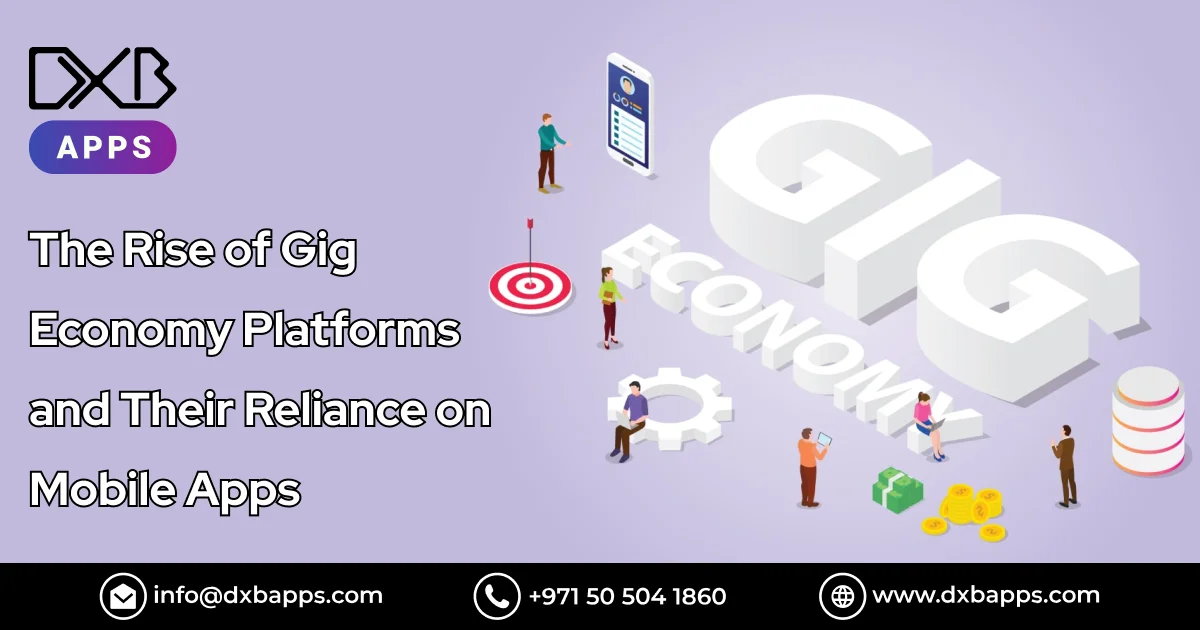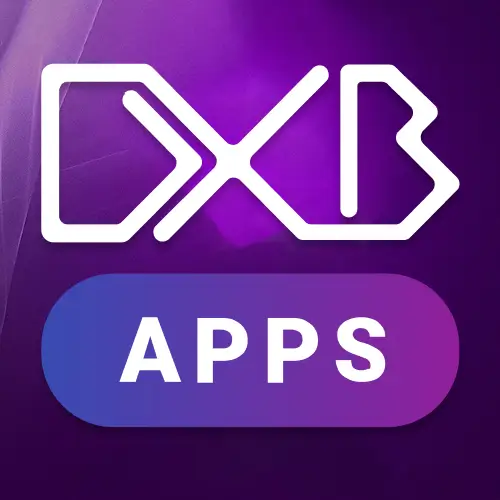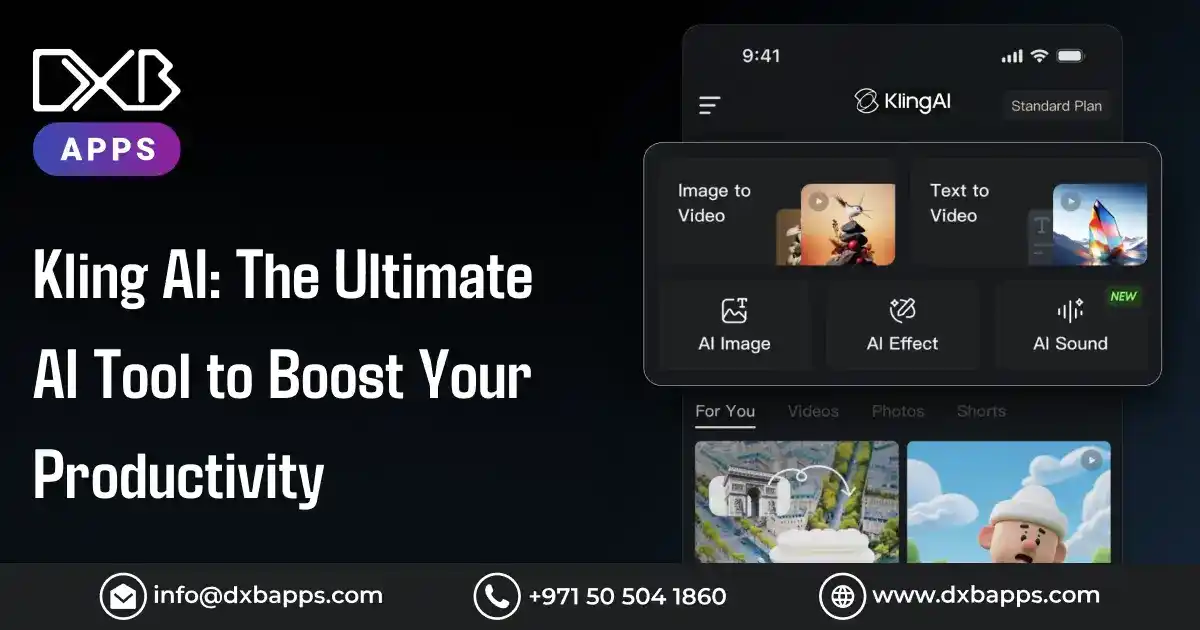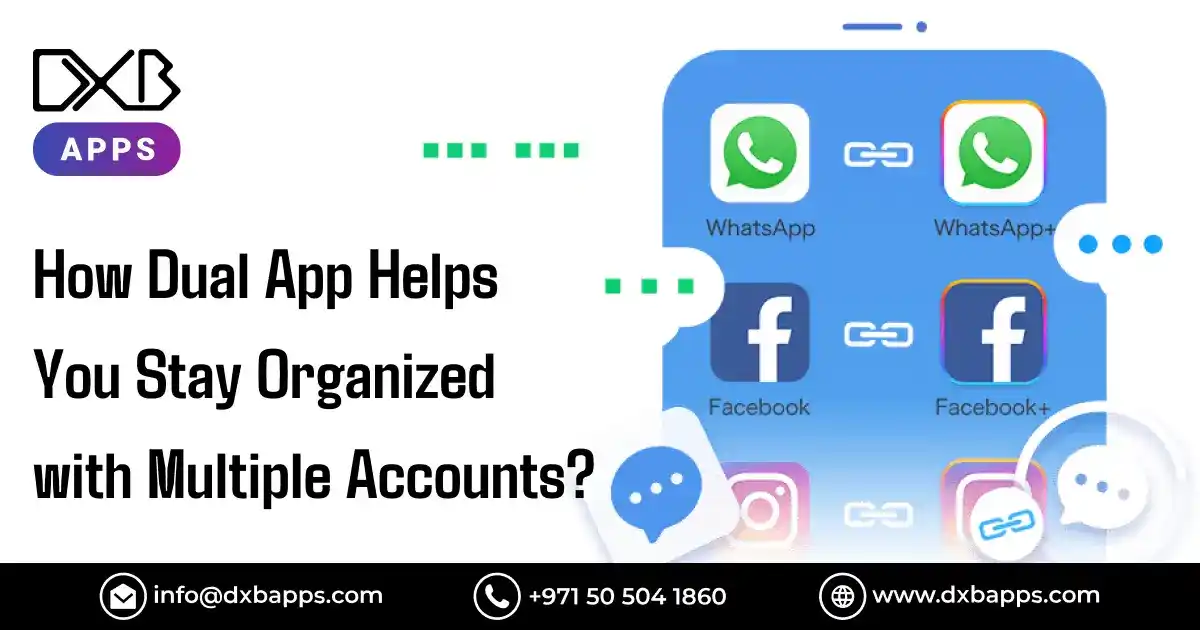The gig economy is one of the transformations in today's fast-paced digital landscape as it has changed the conventional employment system. This new ecosystem allows workers to perform short-term tasks or "gigs" for various clients, and it often has access through digital platforms and apps. There were food delivery writing software codes, among others, and the gig economy combined them by providing flexibility and convenience for workers and their employers.
This sector's growth is inherently connected with an increase in mobile technology, which, in turn, further accelerates the development of gig platforms. Seamless connectivity, ease of use, and real-time updates make mobile apps the backbone of these platforms. The rise of the gig economy worldwide is finding mobile apps highly indispensable to its future.
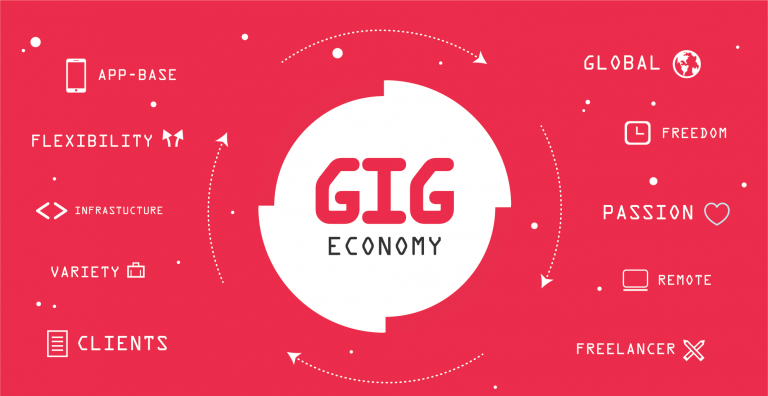
The Gig Economy: A Data-Driven Growth Story
Some exciting statistics support the meteoric rise of the gig economy. For instance, according to a report by Statista in 2024, the global gig market is expected to increase from $248 billion in 2021 to an astonishing $455 billion by 2027. This rapid growth is consequently paralleled by the rising acceptance of digital platforms that connect freelancers and employers.
Gig economy has become a standard way of working for many inhabitants in developed countries. For example, 36% of the workers in the US are implementing gig activities, and they are chalking out about $ 1.3 trillion to the overall economy.
Such trends are also being witnessed across international markets like Europe and Asia-Pacific, primarily because of the widespread use of smartphones and apps to facilitate gig work.
It calls for the rise of niche gig applications targeting service industries, especially healthcare, logistics, and hospitality. Restaurant gig applications help businesses dodge labour shortages by giving them access to on-demand workers. In contrast, gig apps for remote services help freelancers find their way in creative or technically adept areas.
"Gig economies are not just a fashion trend but a sea change in doing work, powered by technology and innovation."
Mobile Apps: The Lifeline of Gig Economy Platforms
The gig economy thrives on the efficiency and accessibility provided by mobile apps. These applications have revolutionized how workers and employers interact, offering features that simplify processes like job hunting, scheduling, and payments.
Core Features of Gig Applications
User-Friendly Design
User-friendly design is a cornerstone of successful gig economy apps. Platforms like TaskRabbit and DoorDash prioritize intuitive interfaces, ensuring users can navigate seamlessly without requiring technical expertise. Menu convenience, seamless onboarding, and understandable features make it effortless for gig workers to locate and join a task rapidly. These designs also decrease the learning curve, which compels users to revisit the app more frequently.
Real-Time Updates
The efficiency of an application in the gig economy is achieved through real-time updates. Feedback on job availability, task acceptance, earnings, and schedules would inform workers' decision-making. For example, applications such as DoorDash remind drivers about new delivery opportunities so that they can maximize their working time. Employers, too, can enjoy instant status updates on task progress, ensuring transparency. Timely and relevant information in Gig Economy apps for iPhone keeps the users engaged and empowers them to manage work efficiently and effectively.
Secure Payments
A secure payment system is a salient feature of gig economy apps, which creates trust among its users. Workers must know that their money will be processed correctly and on time. Uber, TaskRabbit, and most other platforms use encrypted payment gateways, for instance, and two-factor authentication to secure transactions. More apps than not offer instant payout options, making the worker's earnings available right away. Transparent earnings breakdowns and transaction histories give users greater confidence, thus reducing disputes.
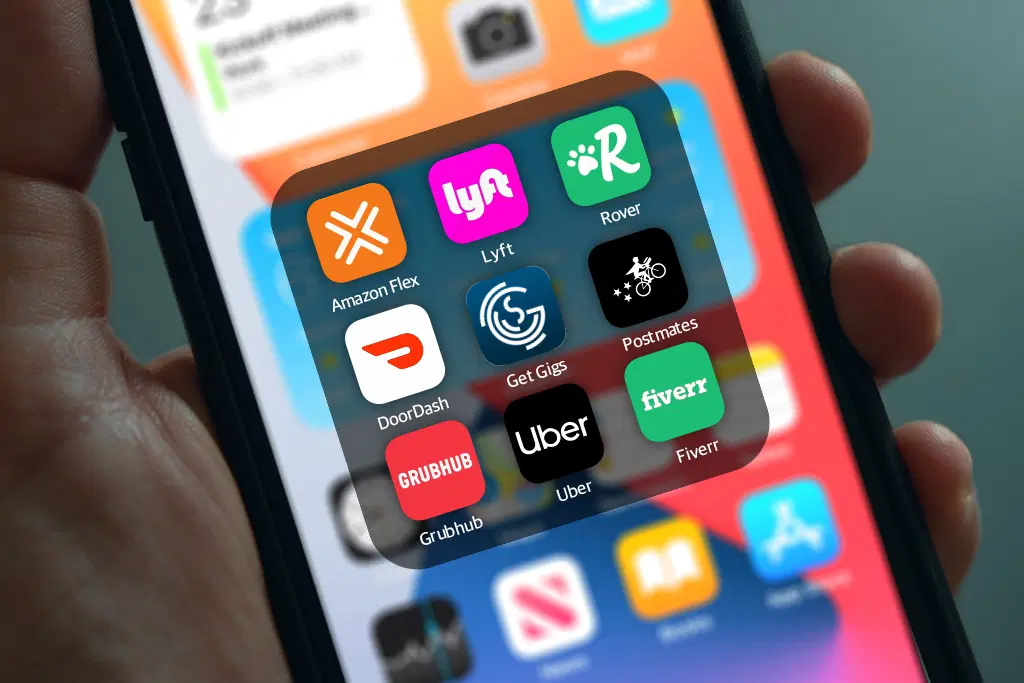
Cross-Device Compatibility
This cross-device compatibility ensures that gig apps efficiently run or can be accessed across different devices and operating systems, such as Android and iPhone. Leaders like Uber and Fiverr prioritize access because they build apps customized for many screen sizes and resolutions. Such flexibility enables workers to reach opportunities regardless of whether they use cell phones, tablets, or desktops. Cross-platform compatibility also benefits users by allowing workers to switch between devices without forfeiting functionality or losing data.
Be it a gig wage app that makes tracking wages convenient or gig economy apps for iPhones that bring special features; the ecosystem is evolving fast enough to fulfil users' demands. These innovations underscore that mobile app development must exploit the latest technologies.
Evolving Gig Platforms Across Industries
Hospitality and Food Services
Restaurant gig apps have transformed the hospitality and food services sector by bringing flexible staffing solutions into the fold. Platforms like Instawork allow businesses to find skilled temporary workers for peak hours, major events, or unforeseen staff shortages. This allows restaurants to uphold service standards while avoiding long-term hiring commitments.
Gig workers also benefit from having opportunities to earn income and build experience at their convenience. Features such as real-time scheduling, clearly transparent pay rates, and location-based job search make these apps indispensable for the hospitality sector, ensuring efficiency and flexibility in the competitive market.
Transportation and Delivery
Transportation and delivery are the flagship industries of the gig economy today. Some of the most influential leaders in this area include Uber, Lyft, DoorDash, and Postmates, which match drivers with passengers or delivery tasks that operate as freelance income for the latter. These two companies have changed the manner and the pace at which people transport themselves within urban structures. They have been dramatically referred to because of their affordability and user convenience.
Delivery services are now meeting the need for quick food, pack deliveries, and other similar services. These apps provide gig workers with autonomy and immediate earning potential while customers appreciate efficient services. Their scalability and user-friendly nature have cemented their role in modern transportation and delivery systems.
Creative and Technical Services
Creative and tech professionals, including designers, writers, and IT experts, gain with remote gig apps like Upwork, Fiverr, and Toptal. These freelance venues open the doors of global markets to their users and connect them with high-paying clients who appreciate their skills. Advanced features such as AI-driven task matching enable the workers to find projects suited to their specific skill sets and preferences. Gig workers can exercise their choice in scheduling, rate-determining, and work with clients from other time zones.
Health
The healthcare industry is becoming more open to gig economy platforms, with more avenues for flexibility and efficiency. Apps like Clipboard Health and CareRev make it easy for nurses, caregivers, and technicians to find temporary shifts. These apps can especially bridge the staffing gaps in hospitals, clinics, or long-term care facilities. Gig apps offer transparent pay rates, shift immediate notifications, and work across multiple locations. Using these applications, healthcare organizations can maintain the workforce but reduce administrative needs while allowing the workers to have total control over their careers in balancing personal and professional commitments.
Challenges Gig Economy Platforms Face
The gig economy has unlocked enormous potential, but there's no denying it's not without challenges.
Labor Rights and Benefits
Some gig workers lack benefits such as healthcare, paid leave, or retirement savings. This erosion of traditional employment benefits is why labour rights have become a global debate about the need for regulatory reforms. Without employee protections, such workers could face monetary loss and not have a robust support system in emergencies or personal crises. Governments and advocacy groups are increasingly demanding legislation that extends fundamental worker rights to those in the gig economy.
Market Saturation
The influx of mobile applications operating under the gig economy has furthered market saturation. The competitive force that a new entrant perceives becomes increasingly challenging amid this sea of gig economy applications battling for a mutually finite pool of workers and clients. Overcrowding leads to intense competition, more often than not slashing prices and profit margins and making a brand challenging to achieve. Market leaders in the platform economy are well-settled entrants such as Uber, Fiverr, and TaskRabbit, which significantly restrict the options for market challengers or niche platforms.
Technological Enhancements
When speculating on the future of competition in the gig economy, the disperse platform has to incorporate up-and-coming technologies like AI, machine learning, and blockchain. The technological developments enable gig apps to enhance functionality, improve user experiences, and ensure secure transactions.
AI-driven algorithms can promptly match workers with the proper gigs based on their skills and preferences, and the subsequent model refines those matches over time for more precision. It is up and running a payment system, making it more secure from fraudsters and the most populated since users can transact more confidently. Companies seeking to make their platforms sustainable in the future shall be the companies facing the above challenges most properly.
The Future of Gig Economy Platforms
As the gig economy continues to evolve, so does its technological foundation. Experts say AR, VR, and AI will be transforming the main pillars of gig platforms. Examples:
1. AR and VR: Virtual training sessions for gig workers.
2. AI-Driven Insights: Personalization and efficiency to be maximized.
3. Decentralized Platforms: Use blockchain to reduce the involvement of intermediaries and costs.
This will further cement mobile apps' position as the lifeline for gig platforms, making them nimble and versatile in this fast-changing world.
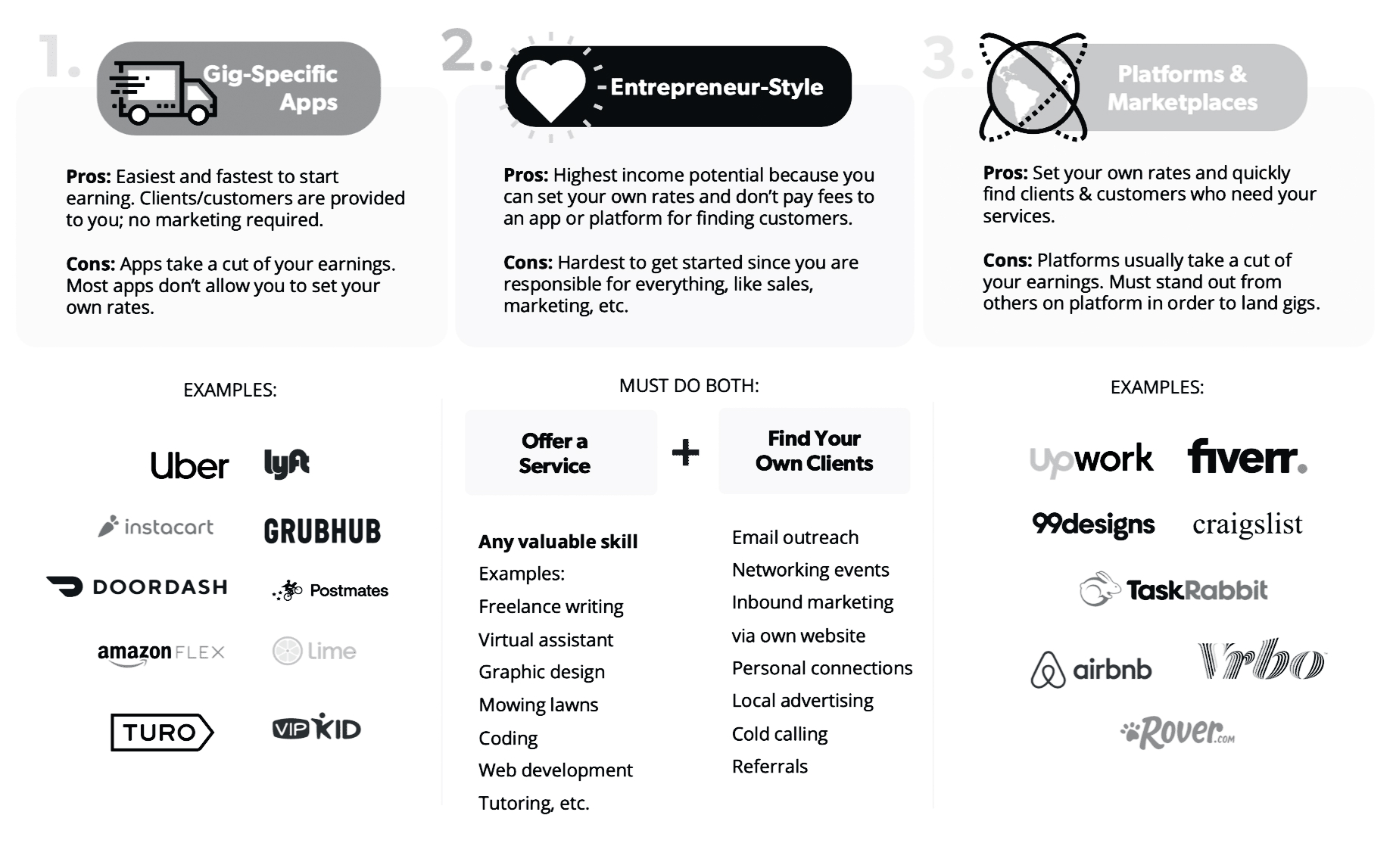
DXB APPS: Pioneers in Gig Economy Application Development
As an App Development Dubai company, DXB APPS has revolutionized how gig economy platforms are designed and developed. The company's innovation in mobile app solutions ensures clients acquire rich features, scalable solutions, and responsiveness to their needs.
Whether developing a restaurant gig app or building the best gig apps for niche markets, DXB APPS delivers unparalleled solutions. Focusing on user experience and technological advancement makes this mobile app development company a trusted one globally.
"From customized restaurant gig apps to best gig economy apps for niche markets, DXB APPS always provides the ultimate solutions."
Conclusion
The gig economy refers to more than a trend-it's a full-fledged revolution in how work is organized and performed. Mobile apps were the driving force behind this change and gave the added flexibility to access and work efficiently and innovatively.
In this high-demand age for gig applications, businesses must invest in a strong, robust, and scalable platform to stay ahead of the game. DXB APPS, armed with rich experience in App Development in Dubai, offers advanced solutions that will give gig platforms an edge.
Faq's
1. What makes a gig app successful?
A successful gig app combines user-friendly design, secure payment systems, and features tailored to its target audience, ensuring a seamless user experience.
2. What are the best gigs for newbies?
For newbies, some fantastic gigs at Uber, DoorDash and TaskRabbit have simple onboarding and immediate earnings.
3. How do the gig economy platforms innovate in DXB APPS?
DXB APPS creates rich-featured applications with AI, blockchain, and advanced analytics for the specialized needs of gig workers and employers.
4. Are the transaction-based gig apps secure?
Most of the Gig apps for Android stress user security by offering encrypted payment systems and fraud detection to allow transactions in a trustworthy manner.
5. Can gig apps be applied to all or most industries?
Of course. Gig apps are surprisingly versatile and fall under transportation, health, hospitality, and creative services.

